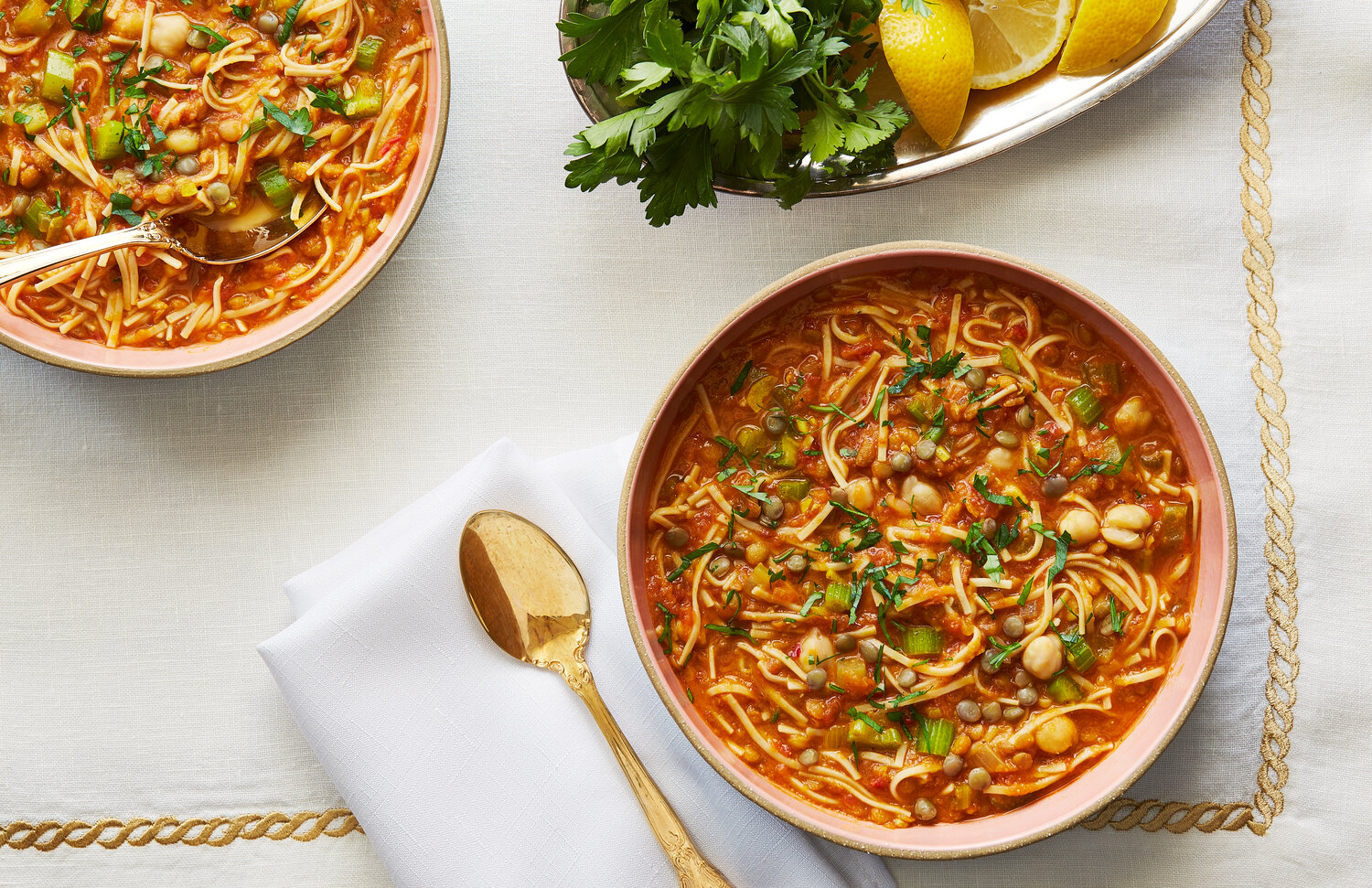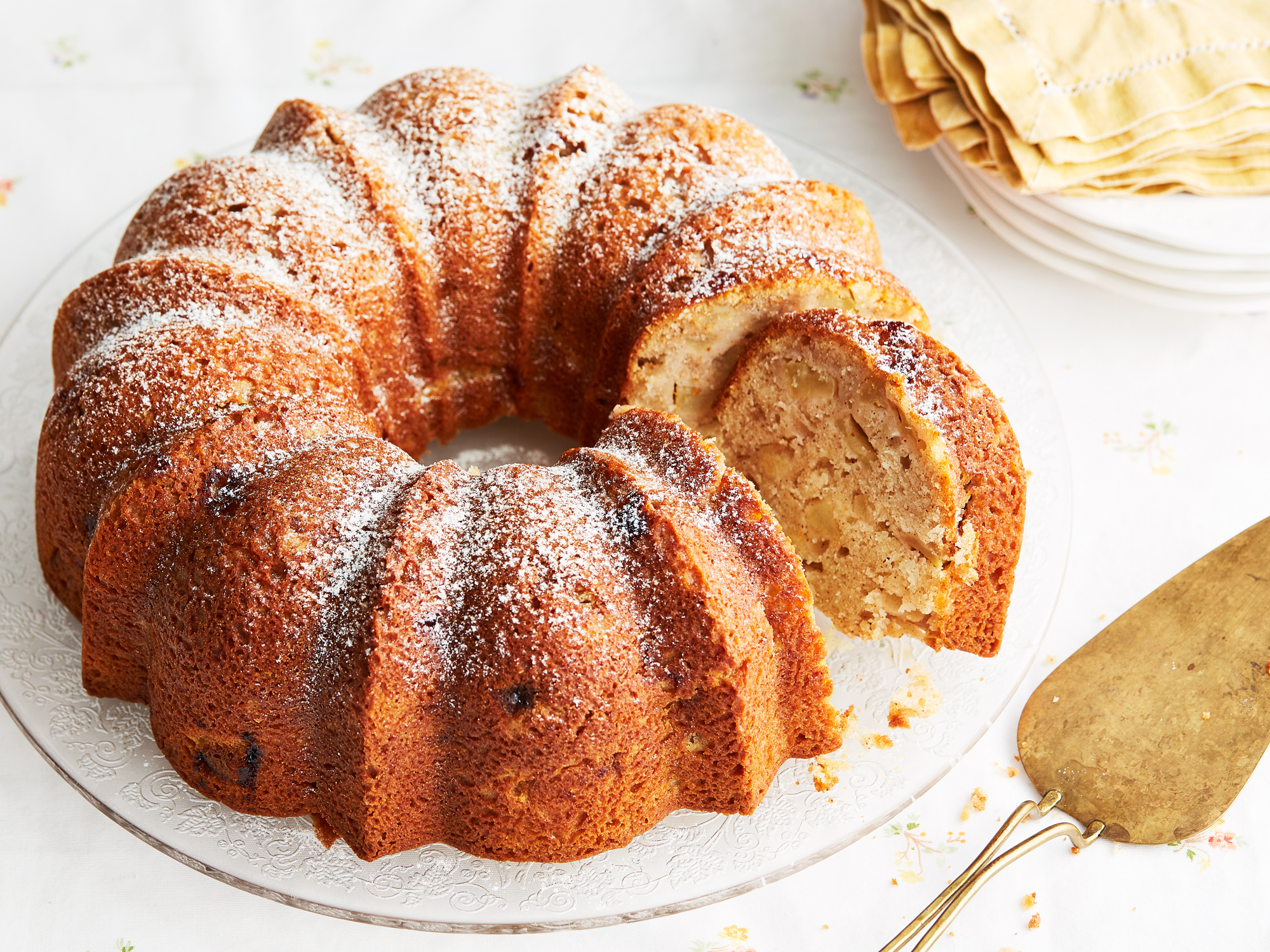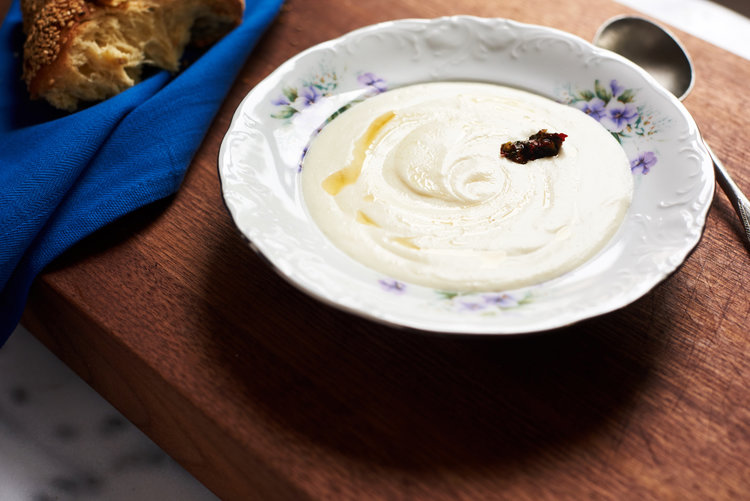When culinary content creator Arielle Nir Mamiye and her cousin Efrat Navon would visit their grandmother Esther in Ashdod, there was always a container of rifat in the pantry ready to be enjoyed with mint tea. The biscuits are also a quintessential part of the family’s Yom Kippur break fast meal. “They are so good and the anise in them is really nice for a break fast,” Arielle explains.
Esther brought many of her recipes, including this one, from her village in the Atlas Mountains in Morocco to Casablanca and finally to Israel in the 1950s. She made rifat with a pasta machine, but a rolling pin also works.
Read more about their family in “A Moroccan Grandmother’s Love Is Rolled Into Her Couscous” on the Jewish Food Society’s archive.
Ingredients
1 cup vegetable oil
1½ cups orange juice
1½ cups granulated sugar
3 eggs
6½ cups all-purpose flour
1½ tablespoons baking powder
2 tablespoons sesame seeds
2 tablespoons anise seeds
Special equipment:
Preparation
- Make the dough: Mix the vegetable oil, orange juice, sugar, and eggs in a medium mixing bowl until well combined. Set aside. Sift the flour and baking powder into a separate large mixing bowl. Add the anise and sesame seeds and stir to combine. Make a large well in the center of the flour. Gently pour the wet ingredients into the well. Use a fork to slowly stir in the edges of the well to mix the liquid ingredients with the dry ones. Continue stirring until the mixture forms a dough. Knead the dough in the bowl for about 2 to 4 minutes until the dough is completely smooth and the ingredients are well incorporated. The dough should be sticky. Cover the bowl with a kitchen towel and set aside at room temperature for about 30 minutes.
- Preheat the oven to 325 degrees. Line four large baking sheets with parchment paper and set aside.
- Shape the dough: Attach a pasta maker to a counter or add a pasta extension to a stand mixer. Transfer the dough onto a floured surface and divide it into 6 even pieces. Take one piece of dough and set the remaining 5 pieces aside. Use your fingers to flatten the dough into a rectangle about 2 inches thick. Starting with the thickest setting of the pasta machine (most likely #1), feed the dough through the machine starting with the short edge of the rectangle and gently catch the flattened dough on the other end with your hand. Reduce the pasta machine to the next thinnest setting (most likely #2), and again feed the short side of the dough through the machine again. The dough should be about ⅛-inch thick. Alternatively, this can be done with a rolling pin.
- Place the rolled out dough onto a floured surface. Using a fluted pastry wheel or a sharp knife, cut the dough into smaller rectangles, about 3-x-2½ inches. Peel off any excess dough and reserve. Once the biscuits are shaped, use a pastry stamp or a fork to poke several holes into each biscuit.
- Gently transfer the shaped biscuits onto the parchment-lined baking trays. If necessary, use a knife to help peel the biscuits off of the floured surface. Repeat the dough shaping, cutting and poking process with the remaining 5 pieces of dough. Once all the biscuits are placed on baking trays, transfer them into the oven and bake for about 20 to 25 minutes until golden brown. If necessary, bake the biscuits in batches of 2 baking trays at a time. You can shape all the excess dough into one unified piece and make more biscuits using this dough.
- Set the rifat aside to cool for about 10 minutes.
- Serve with a side of Moroccan tea. Any leftovers can be stored in an airtight container for 10 days.




